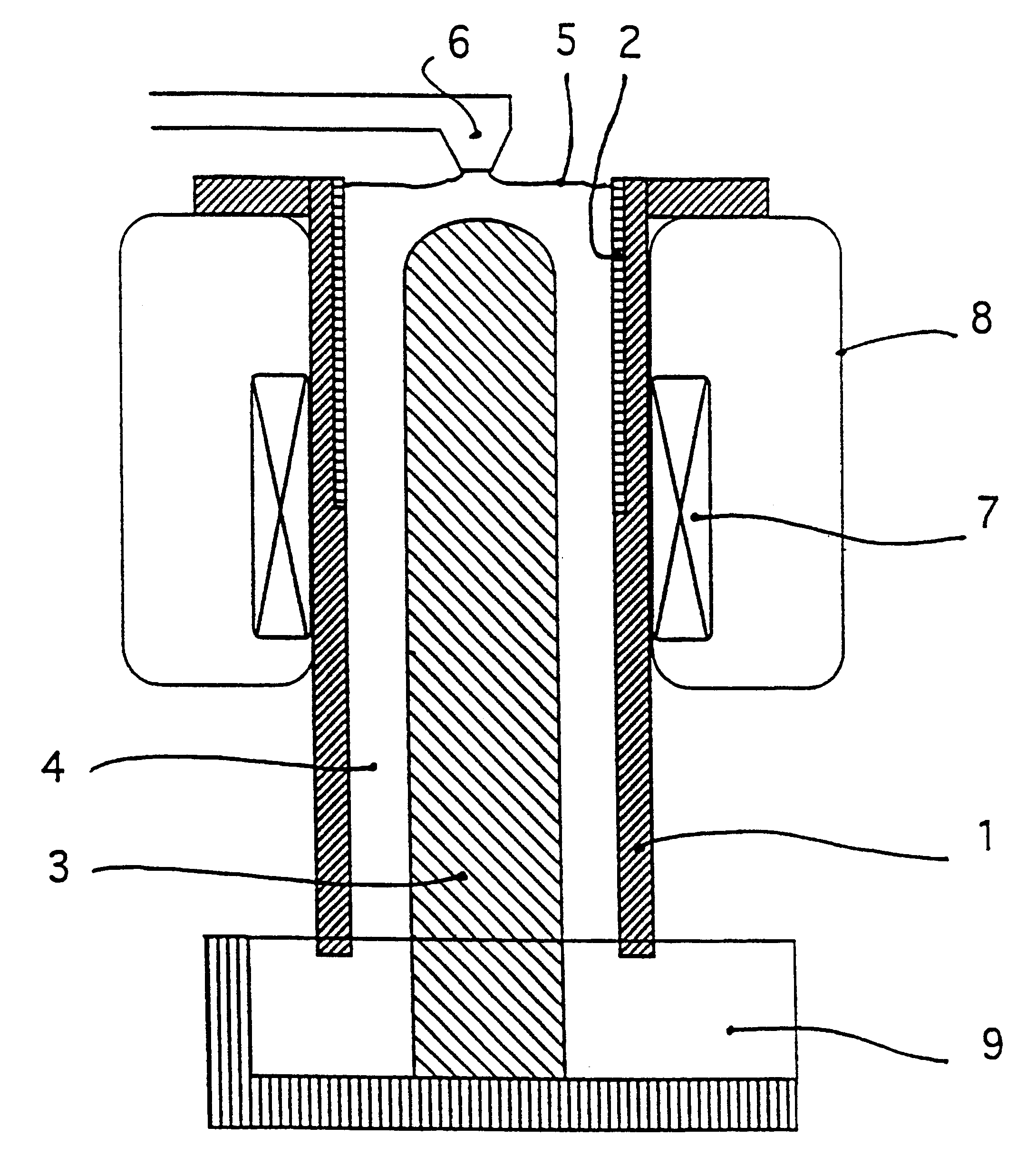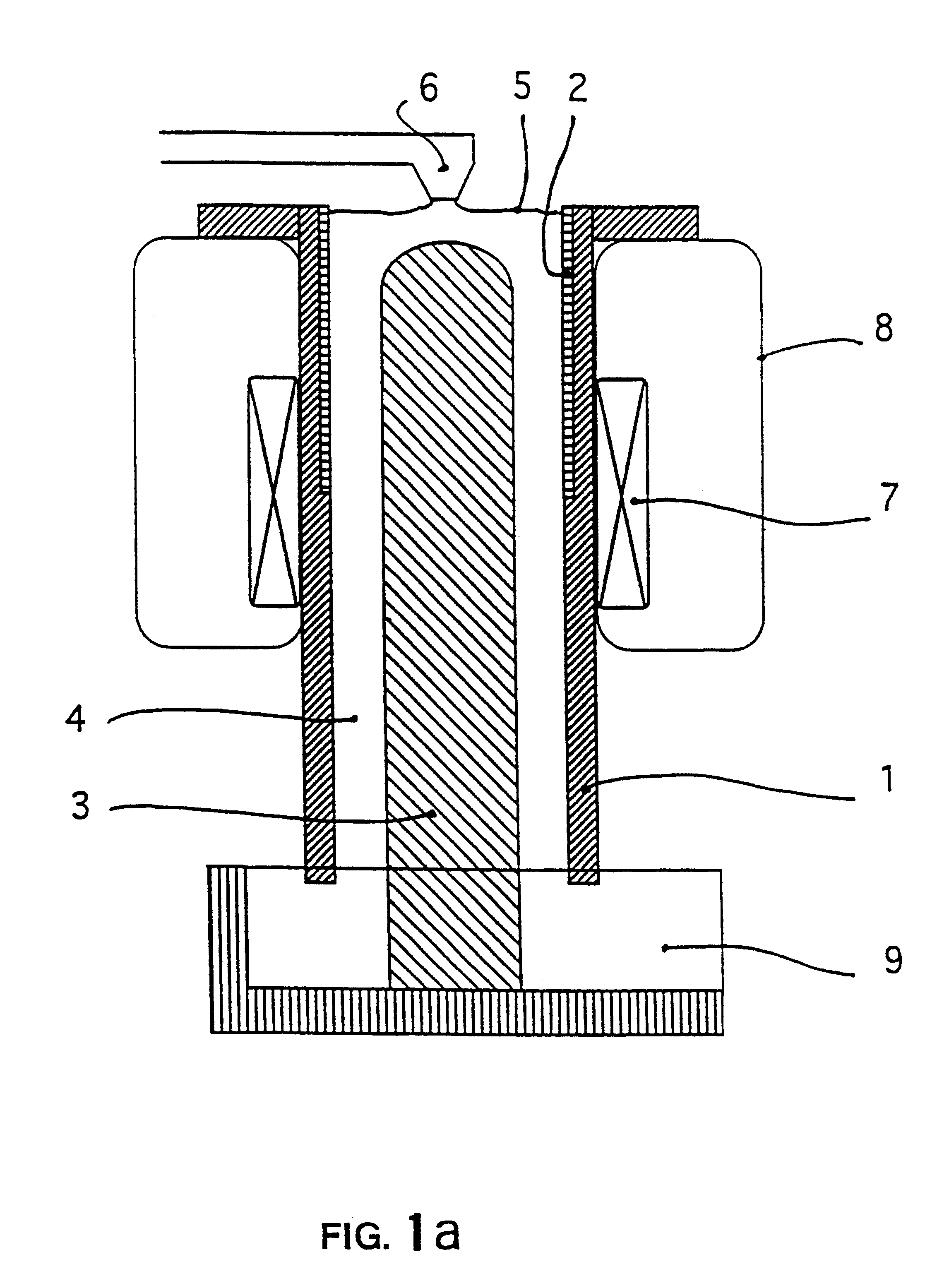Method and device for separating particles from an electrically conductive liquid flow using electromagnetic forces
a technology of electromagnetic force and separation method, applied in the direction of discharge device, solid separation, blast furnace, etc., can solve the problem of preventing polluting solids no more than preventing them
- Summary
- Abstract
- Description
- Claims
- Application Information
AI Technical Summary
Benefits of technology
Problems solved by technology
Method used
Image
Examples
Embodiment Construction
A first aspect of the invention is a process for separation of inclusions contained in an electricity conducting liquid stream, the inclusions and the liquid having different electrical conductivities, by means of electromagnetic forces characterized in that the said flow is subjected to a heterogeneous magnetic flux in space, the said magnetic flux resulting from a continuous static magnetic field.
The process can thus deviate all inclusions in the same direction, generally radial within the moving liquid and usually confined within an appropriate chamber so that they can be concentrated in a part of the stream (usually near the boundary) and then recovered from this area, the rest of the flow thus being free of inclusions.
The process is applicable to all liquid metals including steel, copper, etc.), but particularly to Light metals or liquids such as aluminum, magnesium, sodium and their alloys, and to aqueous saline solutions, molten salts, etc., when their low density does not ha...
PUM
| Property | Measurement | Unit |
|---|---|---|
| Length | aaaaa | aaaaa |
| Electrical conductivity | aaaaa | aaaaa |
| Magnetic field | aaaaa | aaaaa |
Abstract
Description
Claims
Application Information
 Login to View More
Login to View More - R&D
- Intellectual Property
- Life Sciences
- Materials
- Tech Scout
- Unparalleled Data Quality
- Higher Quality Content
- 60% Fewer Hallucinations
Browse by: Latest US Patents, China's latest patents, Technical Efficacy Thesaurus, Application Domain, Technology Topic, Popular Technical Reports.
© 2025 PatSnap. All rights reserved.Legal|Privacy policy|Modern Slavery Act Transparency Statement|Sitemap|About US| Contact US: help@patsnap.com



